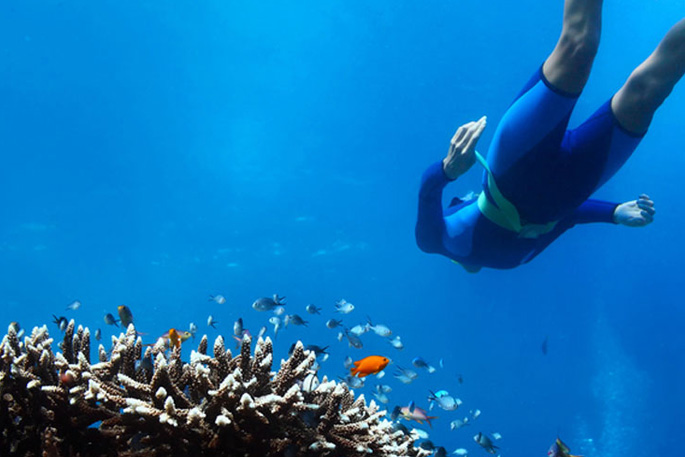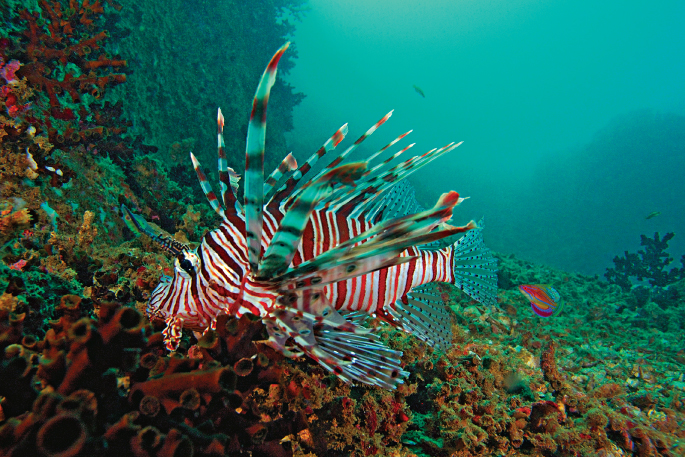Snorkelling in the Ocean; Sri Lanka’s Hidden Adventure
East or West, Sri Lanka is a dream location for snorkelling. Throughout the year, you can take your pick from: Pasikudah, or Trincomalee on the east coast, or, Mirissa, Unawatuna or Hikkaduwa on the southern coast.

Snorkelling in Pasikudah
Pasikudah gives you one of the longest stretches of shallow reef coastlines - in the world. You can walk a few kilometres into the ocean. The water is not too deep and weak currents prevail for most of the time.
Pasikudah Sea Life & Reef
It is beautiful to snorkel in Pasikudah. You will enjoy seeing some amazing marine life: from Bengali snappers, Yellow striped Goatfish, Trevally, Coral Rock cods and Sting rays - just to name a few. These waters are home to over 50 species of coral species which primarily belong to the families of Acroporidae, Faviidae and others. Here in the coral habitat, you will see darting Damselfish, Butterflyfish and Cardinal fish can be seen.
Getting to Pasikudah
Batticaloa is the closest town to Pasikudah, which is just 30 kms away. If you are travelling by vehicle from Colombo to Batticaloa, it is about a 7 to 8 hour journey by vehicle. Train service is available but not recommended as these are old trains and the journey long and tedious. There are night buses that ply from Colombo to Batticaloa but they begin around 9/10pm and reach their destination by 3/4am the followed day. My advice is to travel in a vehicle - which your hotel could help you out with or the local taxi services, which offer long distance packages.
Pigeon Island, A Unique Snorkelling Spot
Located on the eastern coast of Sri Lanka, what is great about Pigeon Island is its shallow reef and wondrous marine landscape - which makes for a great snorkelling experience. The Pigeon Island Marine Sanctuary consists of 2 islands and you will be greeted by the sight of the Blue Rock Pigeons nesting here. The Large Pigeon Island has a 200 metre long coral reef which is about 100 metres wide. There are hundreds of exquisite coral here, unlike anywhere else in Sri Lanka although they have suffered a fair degree of damage. The coral habitat in the area of the Small Pigeon Island makes it an attractive feeding and breeding ground for hundreds of reef fish, such as: Wrasse, Ragged Fin, Parrotfish and the Black Tip Reef Shark among many others. There are sea turtles too.
When To Go
The busiest time here is between May and September, as this is the time to be here. You may want to book your stay in advance as the local hotels get booked pretty fast during the season. Many hotels will help you to organise your snorkelling trip to Pigeon Island if requested.
Getting to Pigeon Island
As Pigeon Island is close to Trincomalee, you will have to get here initially. The distance from Colombo to Trincomalee and a road trip can be covered in about 6/7 hours (depending on your departure time). The Island with its silky white beaches, is just about a kilometre from Nilaveli Beach.

Hikkaduwa
Hikkaduwa’s slice of the Indian Ocean is a dream to snorkel in, with the coral reef creating a barrier; the naturally formed enclosure breaks the current and makes it a great snorkelling experience.
Snorkelling in Hikkaduwa & the Coral Reef
The shallow, clear turquoise-blue waters offer great visibility to snorkel. You may well see a great variety of fish, like: angel fish, puffer fish, moray eels, sea cucumber amidst turtles and other fish. You can wade into the waters some distance before you will need to swim.
Keep in mind that the coral reef is in a damaged state due to various factors (coral mining, poor fishing practices, people breaking away coral) and was further impacted by the tsunami, over a decade back. Also, do watch out for sea pencils and jellyfish to avoid getting hurt while snorkelling. The beach tends to get a bit crowded, with food shacks in the vicinity as well.
Beach people are bound to ask if you would like to feed the turtles which are commonly seen here - but they will expect a heavy fee in return - so use your discretion.
Getting to Hikkaduwa
The coastal town of Hikkaduwa is just a two hour drive from Colombo on the southern expressway. The train from Colombo Fort Station to Hikkaduwa, takes about the same time to get there. It’s a lovely, interesting ride alongside the Indian Ocean.
Snorkelling in Unawatuna
Unawatuna possesses an idyllic stretch of beach and sea. Only a short distance from Galle, you can reach Unawatuna in just about 2.5 hours via the southern expressway (from Colombo). If you are in Galle, you can easily get to Unawatuna by tuk tuk or the local bus service.
Jungle Beach & Rock Island
Snorkelling can be done off the beach of Unawatuna, but there are two locations which will give you greater experiences. Jungle Beach is a picturesque and secluded oceanfront, and the headland facing Galle is a nice place to snorkel. You will find live coral and some varieties of fish. Mind you, Jungle Beach can get pretty crowded and people wading in the shallow waters can disturb the clarity of the waters. Another good spot to snorkel would be Rock Island, which is about a kilometre offshore where interesting kinds of sea life can be seen.
There are plenty of shacks renting out snorkels and masks but make sure you check your equipment before you rent - as there are several dud ones in the market. Also, do carry enough water when you go to Jungle Beach, as there are no places on the beachfront to buy water.
Mirissa
The coastal town of Mirissa sits almost on the southern tip of Sri Lanka, just beyond Galle. If you plan to go direct from the airport, it is about a 3.5 hour journey via the southern expressway.
Consisting of crescent-shaped beaches, the shoreline of Mirissa gently eases into the ocean - so there is no dangerous shelving. This also means you can walk out into the water for about 20 to 25 metres before the water gets to about waist deep and chances are you will spot fish swimming by your feet.
Mirissa - A Snorkelling Haven
Mirissa is great for snorkelling. Once you reach Mirissa Beach, look to your left and you will see the area around Parrot Rock (locally called Giragala). This part of the bay is particularly popular for snorkelling. If you snorkel all the way to the left end of the bay, you will sight plenty of coral and fish, such as: Spanish mackerel, Sailfish, Yellowfin Tuna, Barracuda and Giant Trevally.
Most visitors find Mirissa less frequented and more relaxing a location to spend time snorkelling.
When To Go
If you plan to go to Mirissa, do so during April to November, when generally fine weather prevails and the ocean is calm - giving you great visibility in the waters. During other months, you could experience choppy waters and it can get quite rough to enjoy snorkelling. Plus Mirissa tends to get crowded too with the locals enjoying the vacations.
Other Things to do in Mirissa
Mirissa is noted as a hotspot for surfing in Sri Lanka, on the Mirissa beach. But the town has become famous for Whale Watching in Sri Lanka, with boats operating from the Mirissa Fisheries Harbour. Journeys begin as early as 6a.m. to catch sight of dolphins and whales and these boat rides could take up to half a day.



